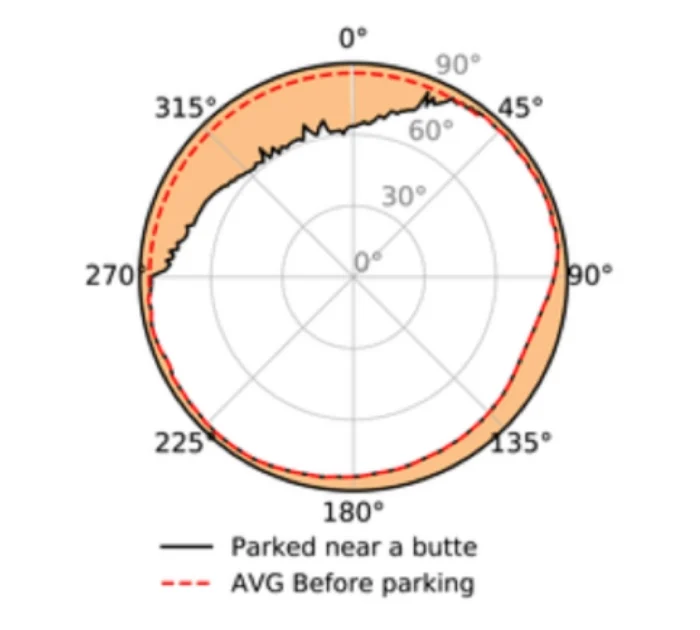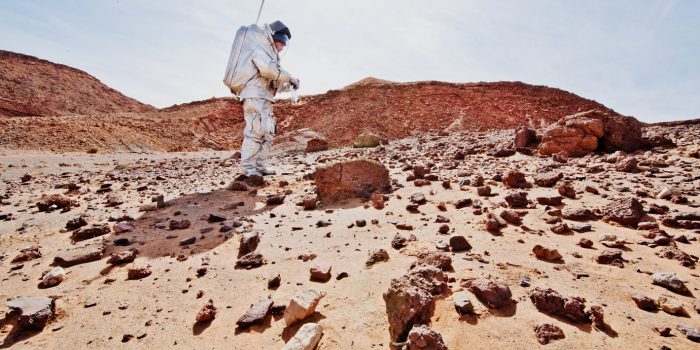In the last few decades, human exploration of Mars has accelerated. Several robotic landers, rovers, and orbiters are scheduled to be placed on or around Mars by the end of the decade. Furthermore, many volunteers are willing to make a one-way trip to Mars, demanding that we convert it into a second home. All these suggestions have drawn attention to the risks associated with sending humans to Mars. In addition to the cold, dry climate, oxygen deficiency, and enormous sandstorms, radiation also leaves us with a question mark.
Mars has no protective magnetosphere, as Earth does. As a result, the surface of the Red Planet is exposed to much higher levels of radiation. Because Mars lacks a thick atmosphere like Earth, radiation from space has almost unlimited access to the Martian surface. Machines are free to traverse the Martian surface, exposing themselves to all of that radiation. On the other hand, it is extremely hazardous for human health.
But how will future human explorers deal with that? They will, after all, require shelter. So they’ll have to either bring it with them or build it there. Or they could use natural features to protect themselves.

A new study employing data from Mars Science Laboratory (MSL) Curiosity has revealed that the natural features of Mars can be a shelter against radiation. It shows in particular how Martian buttes protect against high-energy particles from space.
“Directions for Martian Surface Radiation and Upward Albedo Radiation Derivation” is the paper’s title and is published in Geophysical Research Letters. Guo Jingnan of the Science and Technology University of China is the lead author.
When MSL Curiosity landed on Mars in 2012, a device radiation assessment detector device was included in its mission (RAD). RAD prepares potential human visits to the Red Planet. It monitors dangerous radiation emitted by the Sun and other sources on Mars. Moreover, it assesses the risks posed by radiation to microbial life on Mars. RAD is roughly the size of a toaster and is discreetly situated on the top surface of Curiosity.

One of the areas MSL studied with RAD is the Murray Buttes region. Its primary mission was drilling, but RAD was also operating, providing scientists with a 13-day reading of radiation data in one area.
According to the RAD data, the radiation exposure dropped by 5% near the butte area. The research team also built a sky visibility map, which revealed that while the rover was close to the butte, 19 percent of the sky was blocked.
Due to terrain features, Curiosity didn’t have an uninterrupted view of the sky while travelling through the Murray Buttes area. Therefore by combining averages from past months and comparing them to data collected during the 13-sol parking, the scientists created a panoramic view of the sky.

These approximations and averages are shown in the red dotted line shown above.
Furthermore, RAD found that radiation affecting things or humans come from space to the Martian surface. However, part of the radiation is albedo radiation, which strikes objects from below.
It turns out that the same surface features can both boost reflected radiation and provide protection against direct radiation. Buttes, according to RAD, can cause an increase in this secondary, reflected radiation.
On Mars’ surface, radiation exposure varies rather than being constant. Heliospheric fluctuations and the angle of the sky to which any explorers may be exposed can have an impact. Radiation must flow through more atmosphere at a steeper angle, affecting surface exposure.

The research contributes to a fuller understanding of the Martian radiation environment. Shelter is a vital requirement for explorers on Mars. If an advantage can be achieved by utilising existing terrain characteristics for protection, such aspects must be included in future missions.
Detailed radiation maps that consider sky exposure, geography, and other factors could save human lives.
This article was originally published by Universe Today.


